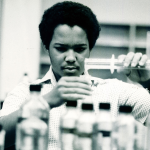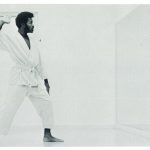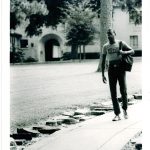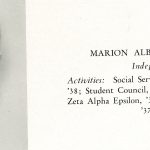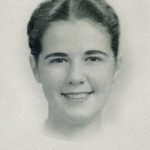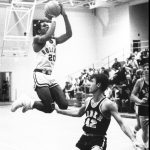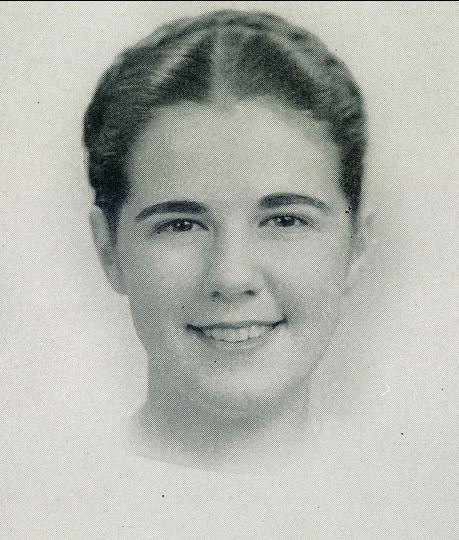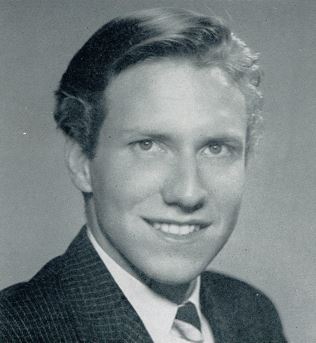Each Spring , as a part of a Capstone experience, a cohort of Rollins College senior history majors takes on an original archives research assignment. [For further details about this assignment see this blog post referencing the HIS 490 Senior Seminar with Dr. Claire Strom.] In Spring 2019 and Spring 2020, this Capstone assignment tasked seven Rollins college seniors with developing a compelling historical narrative about local race relations alongside, and in conversation with, a representative grouping of digitized archival materials — materials they had worked with closely as they researched their unique topics throughout the entirety of the semester. The project’s goal was to provide online researchers a series of mini-exhibit experiences, each focusing on a different aspect of race relations at Rollins.
The below narratives and image links are the culmination of these budding historians’ efforts, and, taken together, speak volumes about what life in Winter Park was like before, during, and after integration. [To see the complete online archive of all the digitized artifacts on this topic, see the Rollins College Archives Pathway to Diversity Collection.]
Mini-Exhibit 1
Desegregating Campus Spaces
[INSERT GALLERY OF RELEVANT IMAGES, EXAMPLE BELOW]
By Erin McFee (Class of 2019)
Rollins College officially desegregated when it welcomed its first African American student in 1964, John Cox. This year marked the beginning of a longer, and undoubtedly difficult, journey for black students at Rollins to find spaces they felt welcome on campus, enjoyed as full-time residents, and excelled as leaders. Looking back, it is clear that some of these safe and familiar spaces included: the chapel (Knowles Memorial Chapel), the theater (Annie Russell Theater), the gymnasium (Alfond Sports Center), a few residence halls (for example, Ward Hall), campus green spaces (like Mills Lawn), the bookstore (Rice Family Bookstore), and of course, the classroom. African American students also seemed to “find their anchor” (to use a common, more current Rollins slogan) through various student organizations on campus such as Residential Life, Greek Life, the newly-formed Black Student Union, and performing arts groups like the Rollins Players.
Read the full narrative on this topic here.
Mini-Exhibit 2
Integration of Rollins Sports Teams
[INSERT GALLERY OF RELEVANT IMAGES, EXAMPLE BELOW]
By Jack Schwab (Class of 2019)
Almost twenty years after Rollins College President Hamilton Holt’s decision to cancel a homecoming football game against an integrated Ohio team due to the threat of violence, Rollins welcomed its first black athletes in 1967. Records from the College Archives provide some insight to the experiences of these first cohorts of impressive and brave student athletes. Early black athletes at Rollins excelled in their chosen sports, even in the face of extraordinary hardship both on and off the court or field. And, importantly, many of these students also made other major contributions to Rollins campus in non-sport co-curricular roles, showing a great deal of investment and interest in their broader campus community.
Read the full narrative on this topic here.
Mini-Exhibit 3
Early Rollins Leaders in African American Higher Education
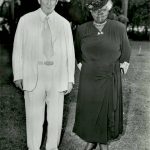
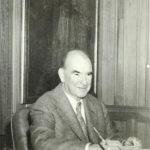
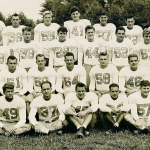
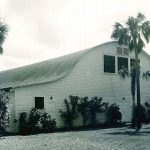
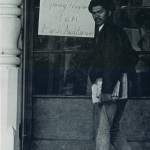
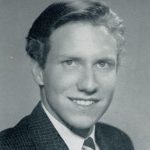
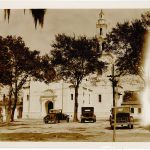
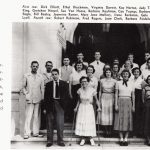
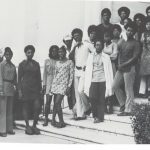


[INSERT GALLERY OF RELEVANT IMAGES, EXAMPLE BELOW]
By Marisa Lagos (Class of 2019)
Rollins administrators and faculty maintained close connections with leading black educational institutions in the state, like Bethune-Cookman University and the Hungerford Vocational School of Eatonville. For example in the 1930s and 40s, a strong professional friendship blossomed between Rollins College President Hamilton Holt and the celebrated African American education leader and advocate Mary McLeod Bethune. As a result a strong alliance formed between Rollins College and Bethune-Cookman College. This connection would last for decades, even after both of their deaths. The administration at Rollins and Bethune-Cookman continued to work together to advance the experience of black students, black educators, and black studies as a curriculum even through the 1970s.
Read the full narrative on this topic here.
Mini-Exhibit 4
Campus and Community Controversies
[INSERT GALLERY OF RELEVANT IMAGES, EXAMPLE BELOW]
By Kyndall Fairbanks (Class of 2019)
While Rollins College and the city of Winter Park were founded around the same time and with similar values, when it came to the Civil Rights movement these two community partners were often in conflict with one another. There are three clear examples of this phenomenon from the College archives (see link below) and together they show that, at times, diametrically opposed viewpoints about integration and race relations caused major rifts between town and gown in Winter Park from late 1930s to early 1970s. Such controversies reflect the diverse and changing perspectives of students, professors, alumni, administrators, and community members who experienced shifting social and cultural norms in different ways during integration and throughout the long Civil Rights movement.
Read the full narrative on this topic here.
Mini-Exhibit 5
Winter Park Philanthropy and the Rollins College Race Relations Committee
[INSERT GALLERY OF RELEVANT IMAGES, EXAMPLE BELOW]

The DePugh Nursing Home of Winter Park, 1971 
Hungerford Vocational School of Eatonville, 1947
By Julie Sparks (Class of 2020)
The Inter-Faith and Race Relations Committee at Rollins College was created in 1945 to work towards breaking down barriers between a wide range of racial and religious groups. The group, composed of white American Rollins students and a faculty sponsor, began contributing to the local African American community through donations and volunteering. A growing partnership with the Hungerford School, an annual “Race Relations Sunday,” and regular fundraising efforts all allowed the Rollins Race Relations Committee to become intimately involved in the discussion about problems with and solutions for racial inequality in America. Into the 1950s, Rollins College and Winter Park as a whole began paying more attention to the disparity between white and black residents and called for a response to instances of inequality with largely humanitarian efforts.
Read the full narrative on this topic here.
Mini-Exhibit 6
The Formation of the Black Student Union at Rollins
[INSERT GALLERY OF RELEVANT IMAGES, EXAMPLE BELOW]
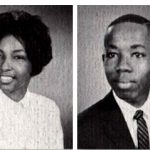

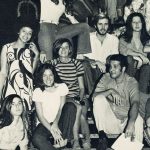
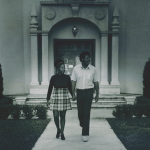
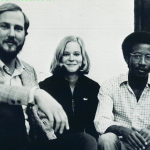
By Veronia Szoke (Class of 2020)
By tracing the establishment and activity of the Rollins Black Student Union (BSU) in its first five years of existence (1969-1976) it is possible to see the organization’s efforts and achievements in both connecting with the national civil rights movement and in creating a positive environment for Black students at Rollins College. The Rollins Black Student Union was officially founded in late 1972 and first appeared in the yearbook in 1973, but the the student organization’s Constitution and Bylaws were documented by the beginning of 1970/1971 academic year, so it was several years in the making. Membership lists and yearbook photographs show changes and continuities in BSU membership between 1972 and 1976. Correspondence from faculty and Black Student Union leaders trace the BSU’s activities and attitudes as they worked to make their organizational purpose a reality. While not every effort was successful, it is clear the Rollins BSU consistently fought for representation of Black students and Black culture on campus.
Read the full narrative on this topic here.
Mini-Exhibit 7
The Fight Against Gentrification in West Winter Park
[INSERT GALLERY OF RELEVANT IMAGES, EXAMPLE BELOW]

Map of Winter Park 1884 
Seminole Hotel Waiters 
Alzo Reddick
By Grace Marshall (Class of 2020)
Hannibal Square and West Winter Park’s modern struggle against gentrification is a local example of a nationwide problem. Once considered a low-income, crime-ridden neighborhood on the Westside of Winter Park, the Hannibal Square neighborhood has displayed resilience in its continued emphasis on community restoration and revitalization, rather than total redevelopment. Organizations like the Hannibal Square Community Land Trust highlight local activism aimed at providing affordable housing for residents, some of whom have lived in the neighborhood for generations. Hannibal Square was originally founded in 1881 to house free blacks who served as agricultural workers, domestic laborers, and railroad operators in service of wealthy white residents. These individuals and their families after them have faced hardship, exclusion, segregation, discrimination, and violence solely based on the color of their skin. As time progresses, and society with it, the story of the perseverance of communities like Hannibal Square should not go unseen, even as they continue to face economic and structural hardship with gentrification.
Read the full narrative on this topic here.
